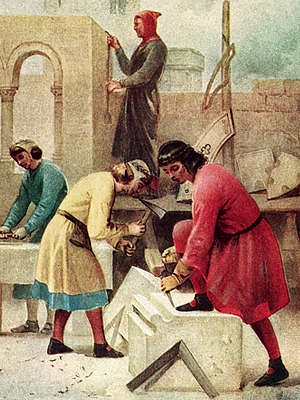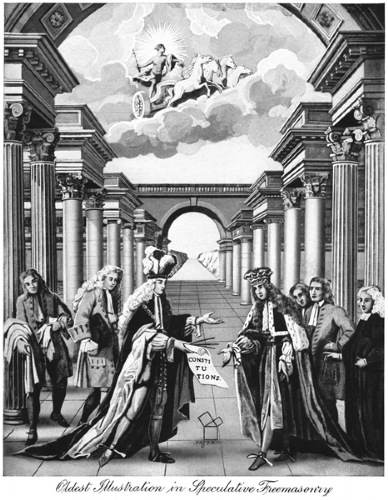Discover the history behind Operative Masons, builders of old who physically worked with stone. These men set the foundation for modern Freemasonry through a series of principles and by building guilds that eventually turned into lodges, attracting outside men in their communities. These men, known as Speculative Masons, adapted the Operative Masons’ rules, tools, and science that helped them build literal, physical structures, into metaphors for building up their character as men.
Freemasonry is a brotherhood rooted in the mission of making good men even better, guided by the core values of Brotherly Love, Relief, and Truth. Every Mason is on a journey of self-discovery, one made alongside fellow men to lift each other, give support, and provide direction in times of need. For centuries, the principles and teachings of Freemasonry have been explored by men eager to make the world a better place and become part of something bigger than themselves.
The lessons of Freemasonry derive from the stonemasons, the European craftsmen of the Medieval age. One cannot trace the history and formation of Freemasonry – also known as Speculative Masonry – without going back to the guilds of the stonemasons, or Operative Masons. Understanding the correlation between the two provides greater context to the teachings and traditions of Freemasonry.
What are Operative Masons?

Today, one can still see spectacular buildings strewn across Europe that were engineered by the Medieval stonemasons. These expert craftsmen erected cathedrals and castles throughout the continent, giving rise to towns and villages and, subsequently, the religion, politics, and all manner of culture that blossomed around them.
Put simply, Operative Masons were the builders of old who worked with stone. They were architect, builder, craftsman, designer, and engineer all in one, armed only with a set of compasses, a set square, a staff, or a rope, and an understanding of geometry. With these tools, they built wondrous Gothic cathedrals that have inspired people for generations.
The high demand for the expertise of stonemasons during the Medieval Age gave rise to guilds, member bodies through which the Master Masons passed on their knowledge to the apprentices working under them. As with any profession, members of the guild were ranked by their level of expertise. Those who entered as an apprentice were the low level, unpaid Operative Masons who worked in exchange for training. Once skilled enough, a Mason would reach the next level called Journeymen before ultimately becoming a Master Mason. Master Masons were the true expert craftsmen, eligible to travel and find their own patrons.
Of course, building momentous cathedrals was inherently dangerous work and Masons were often injured or killed on the job. By the 18th century, guilds had swelled and organized into local lodges. It is thought that lodges were originally created as a place to care for injured and sick guild members, as well as their widows and orphans. Over time, the appeal of the supportive community provided by the lodge attracted men who were not stonemasons.
Speculative Masons

As men who were not affiliated with Operative Masonry began entering the lodge communities, they became known as “accepted” or “speculative” Masons while the craftsmen adopted the moniker of “free” Masons. Together they became known as the “Free and Accepted” Masons from which modern Freemasonry has descended.
Speculative Freemasonry can be defined as the application of Operative Freemasonry’s principles for moral and intellectual development. Essentially, while Operative Masons use their rules, tools, and science to build literal, physical structures, Speculative Masons work see these craftsmen rules and tools as metaphors for building up their character as men.
Today, stonemasons’ tools, such as the square and compasses and the Masonic apron, have become symbols synonymous with the fraternity. Even the levels within the stonemason’s guild – Apprentice, Journeyman, Master Masons – reflect the Freemason’s journey of self-improvement. Today, the men of the craft complete a series of three degrees to confirm they are ready to move up the ranks of the lodge.
While it remains unclear exactly when the first formal lodge of Speculative Masonry originated, there is little doubt that Freemasonry as it is known today traces its origins back to the guilds of the Operative Masons. What is certain, however, is that while Freemasonry’s origins may be lost to the sands of time, the lessons and tools used by stonemasons to create the awe-inspiring structures of history continue to inspire decency, humility, and brotherly love in the Freemasons of today.
Looking to learn more about the history and meaning behind common symbols and phrases in Freemasonry? Check out our blogs on the Cornerstone, Forget-Me-Not, and the Masonic Apron.
2 Comments